Revista


$\pi kasle$ was an online magazine created by a group of math students at the University of the Basque Country, which was active mainly between October 2011 and June 2014. Its name is a combination of greek letter “$\pi$”, which represents the area of a circle of radius one, and the noun “ikasle”, which means student in Basque. This magazine was mainly written in Spanish and Basque.
During its active period, $\pi kasle$ published 10 online issues (with ISSN 2174-9027) which could be read and downloaded free of charge from its website pikasle.com, and 3 printed issues (with ISSN 2255-5714 and legal deposit number BI 305-2013) which were distributed for free among math students at the university.
$\pi kasle$’s goal/subject matter was the popularization of mathematics at all levels. This means that most articles were accesible to the general public, having however published more technical articles targeted at university-level math students.
It achieved wide dissemination beyond its birthplace – indeed, it was referenced nationally within the field of popularization of mathematics, and it obtained an Honorary Mention in the category “Works of popularization of science. Media” on the XIV edition of “Ciencia en Acción” (Science in Action), as well as the first prize in the “Science” category of the “III Premios al alumnado que mejor ha difundido la imagen de la UPV/EHU” (III prizes to students who have best broadcasted the image of the University of the Basque Country).
$\pi kasle$ was supported and funded by the “Facultad de Ciencia y Tecnología (ZFT-FCT)” and the “UFI 11/52 Matemáticas y Aplicaciones” from the University of the Basque Country.
Among the ten online issues published by $\pi kasle$, four of them were published in the academic year 2011-12, three during 2012-13, and three more in 2013-14. Among the three printed issues, two were published in the academic year 2012-13, and the rest in 2013-14.
The magazine was led by the Editorial Board, supported by an Advisory Board and a Team of Collaborators. In addition to these, the magazine featured occasional collaborations with different people.
In order to produce an issue, the Editorial Board would meet both the Advisory Board and Team of Collaborators to decide which articles would be featured as well as dividing tasks. After that, authors would send their articles to the Editorial Board, who would edit and format a first draft, including the design of the front page. Later, the Editorial and Advisory Boards would revise and correct the issue until publication on the website.
Below we provide a list of the people who belong to each of these groups, ordered firstly by the year in which they started, and secondly by last name. In the case of occasional collaborators, the year indicates the date of publication of their article.
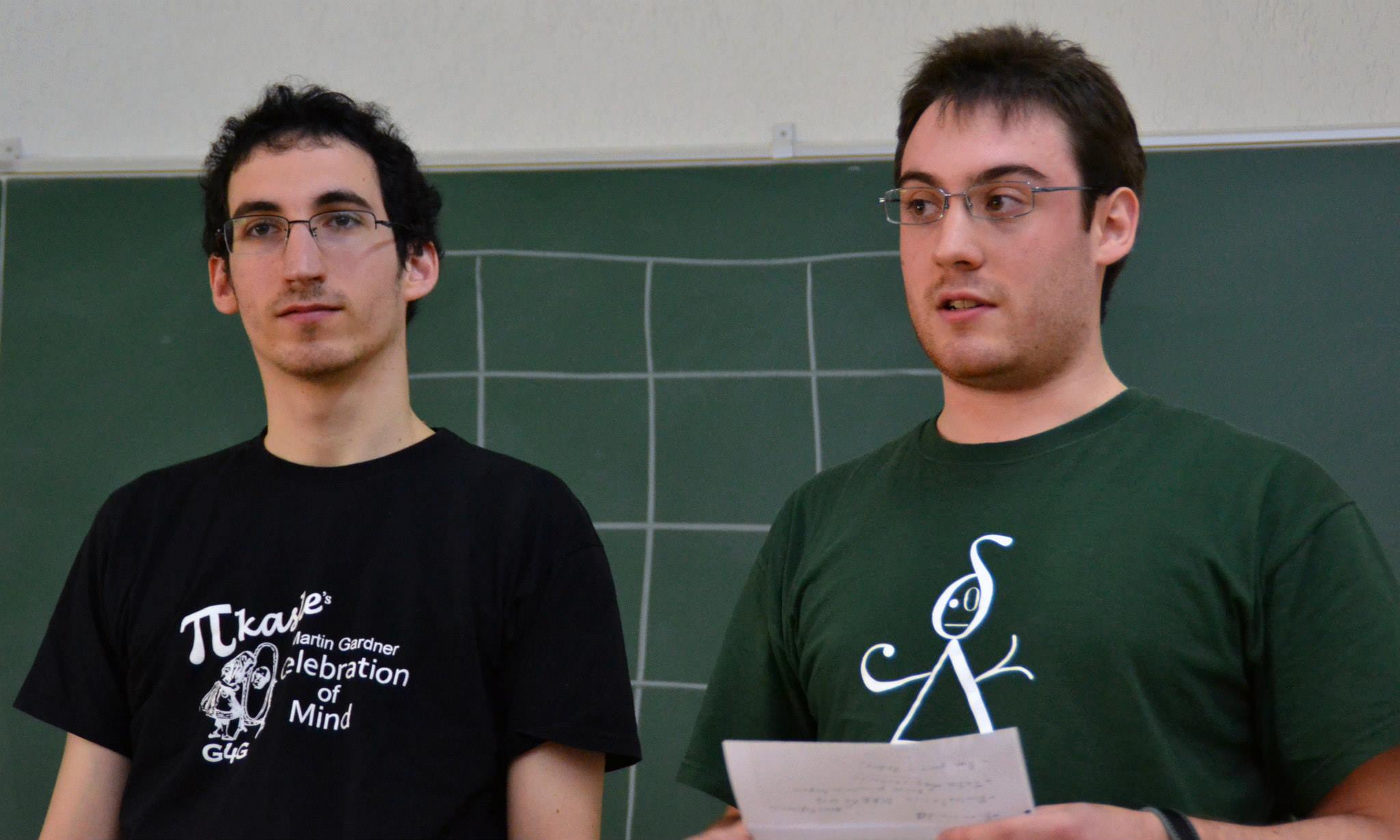
Josué Tonelli-Cueto and Ricardo Grande,
founders and original editors of $\pi kasle$
(©2014 Izaskun Lekuona)
The articles published in $\pi kasle$ were divided into eight sections. We proceed to describe each section together with the people usually in charge for them, as well as a list of articles under each of them.
Most of the articles in this section are a brief press release about events and facts about mathematicians, and they are unsigned. However, this section also contains more developed articles, often signed, such as personal experience of some event or columns.
In this section, run by Víctor Manero, different possible career-paths were described, targeted at undergraduate students.
This section, the youngest in the magazine, contained reviews of books.
As the name indicates, this section featured interviews to people in the field of mathematics, both national and internationally.
This section and its variations featured articles about mathematics and their relationship with other disciplines such as science, art, etc.
This section, run by Irune Gurrutxaga and Aitziber Ibañez, dealt with different topics in the history of mathematics. This is the only section that appeared in every issue.
“Txomin’s contest” was a problem-solving competition organized by mathematician Txomin Zukalaregi. As part of the contest, a problem was proposed and displayed in every classroom of the university. Later, prizes were awarded to those who solved it. In this section, the latest problems and solutions were published in order to further popularize the contest among students.
Over the years, $\pi kasle$ organized various activities targeted both at math students and the general public.
This literary contest consisted in writing a story in 37 words or fewer, and was open to anyone residing in the Basque Country. There were two categories: Spanish and Basque. Ricardo Grande, Marta Macho (chairwoman), María Merino and Josué Tonelli-Cueto made up the panel. In Spanish, the winning infinitesimal story was “Un...todo” by Oihane Ruiz Díaz, and in Basque, it was “Nire bektore zuzentzailea: zatoz.” by Mari Joxe Azurtza Sorrondegi. Both stories were published and can be read in the third issue of the $\pi kasle$ magazine.
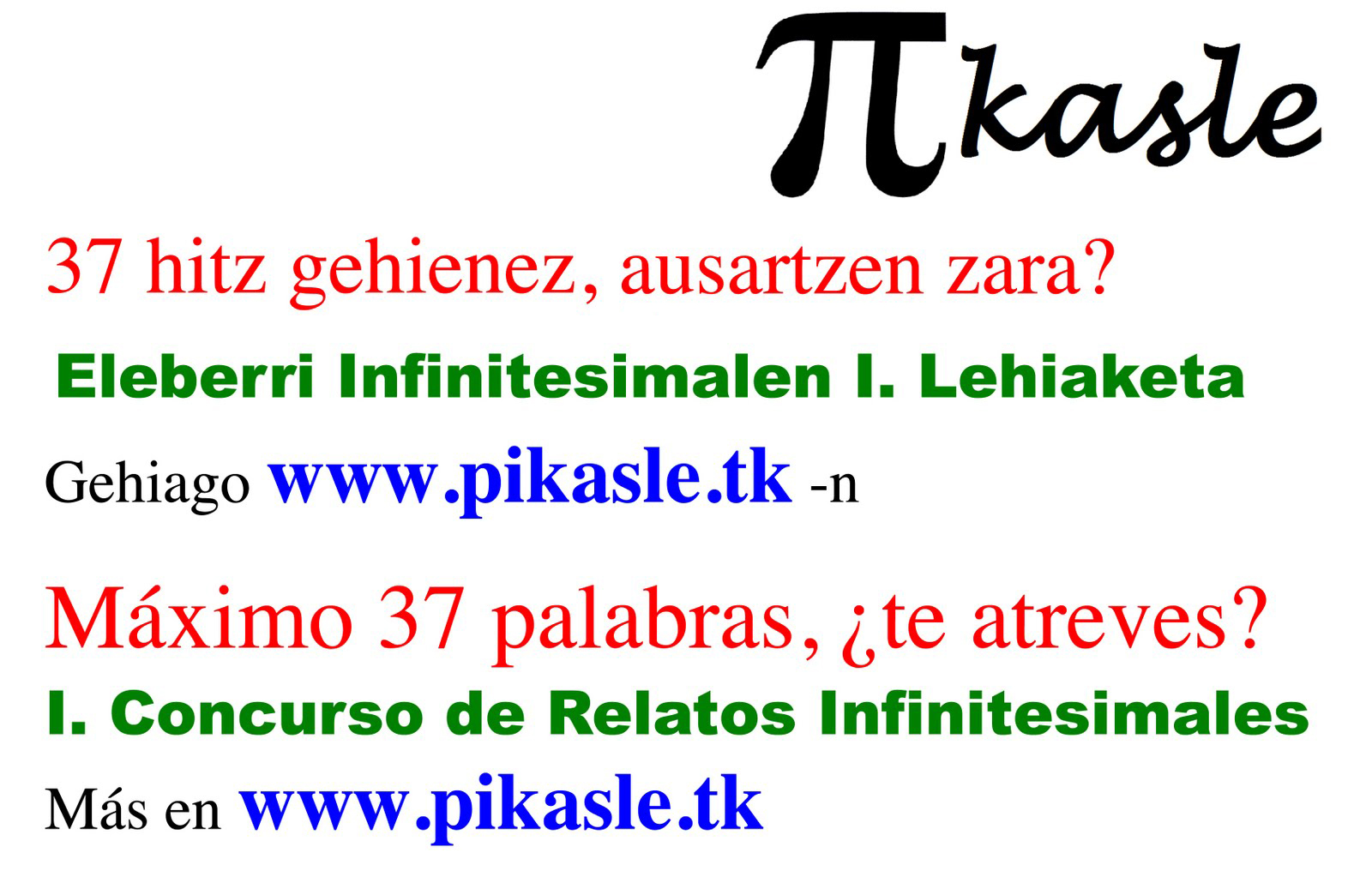
Poster of the contest
Oihane Ruiz Díaz,
winner in the Spanish category
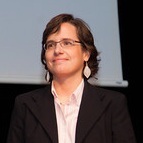
MariJoxe Azurtza Sorrondegi,
winner in the BAsque category
The Martin Gardner Celebration of Mind is a yearly world-wide event, promoted by the Fundación Gathering4Gardner. On October 21, Martin Gardner’s birthday, people around the globe participate in activities (generally public) in his honor. These activities include puzzles, games, magic and mathematics. Pikasle joined the Celebration of Mind on October 23, 2013 by organizing an event open to all students at the University of the Basque Country’s campus in Leioa. Around a hundred people attended the event, which was organized by Josué Tonelli-Cueto and carried out by the following team:
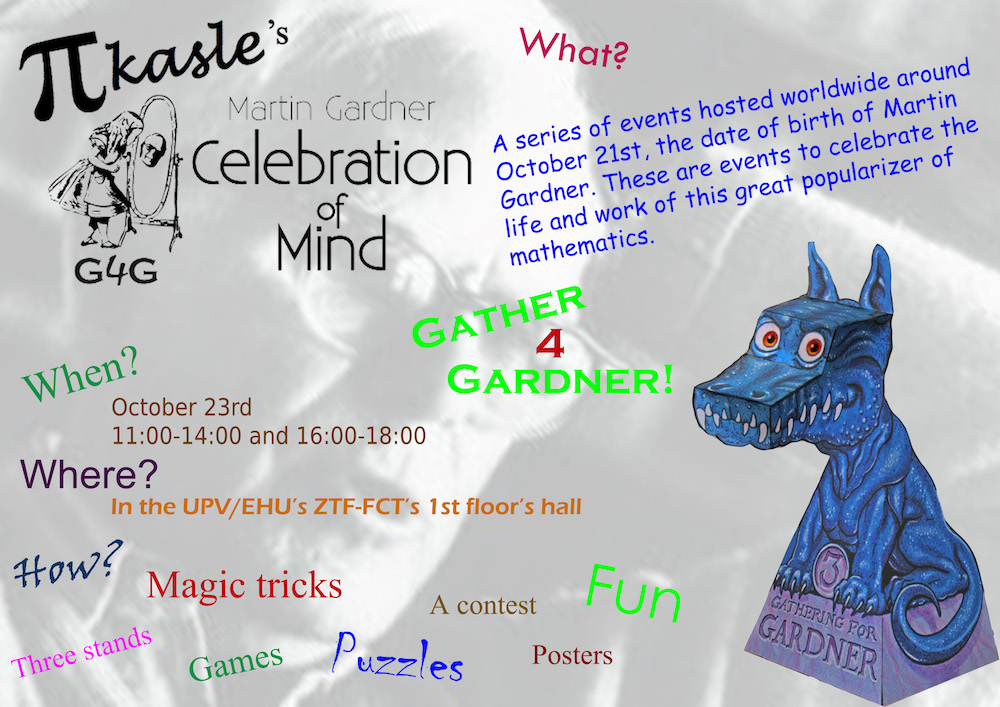
Poster of
$\pi$kasle's Martin Gardner Celebration of Mind
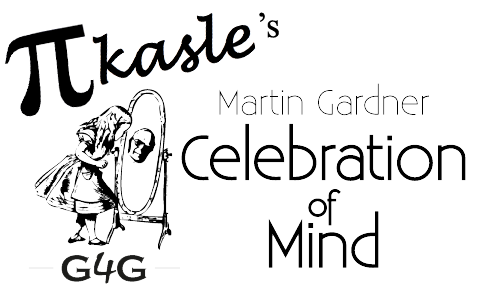
Logo of
$\pi$kasle's Martin Gardner Celebration of Mind
Together with the $\pi$kasle's Martin Gardner Celebration of Mind, a contest about Martin Gardner was organized. Anyone could take part in this contest by presenting an essay, of any kind, about Martin Gardner himself. The prize was Gardner’s autobiography: Undiluted Hocus-Pocus: The Autobiography. Pedro Alegría, Nerea Diez, Ricardo Grande, Marta Macho-Stadler, Víctor Manero y Josué Tonelli-Cueto made up the panel, and the winners were Adiran Garaizar and Nerea Arrarte, who presented a flexicube about Gardner.
Editors Josué Tonelli-Cueto and Ricardo Grande,
with the winners Nerea Arrarte and Adiran Garaizar
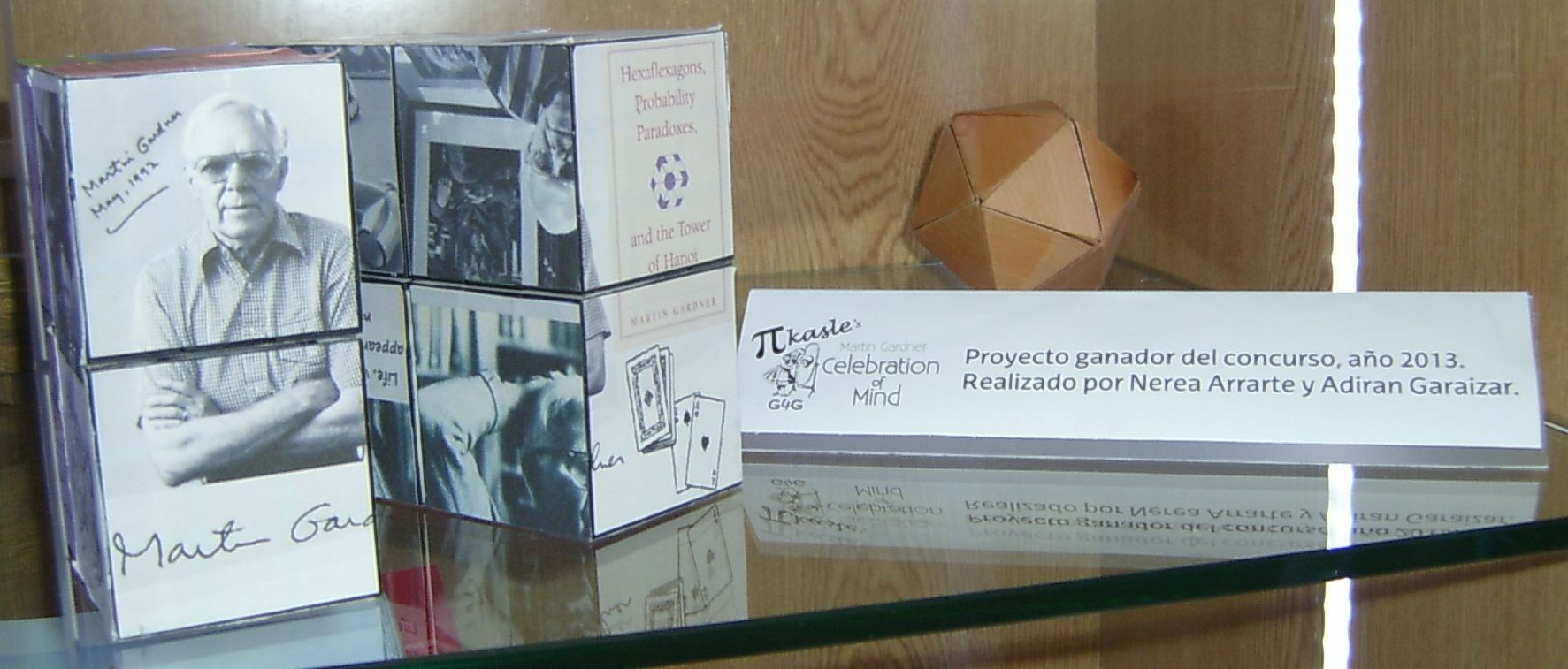
Flexicube exhibited at the University of the Basque Country



Mathematics and Statistics Awareness Month is held each year in April, organized by various American mathematical societies. A different topic is highlighted each year and in 2014, the topic was Mathematics, Magic, and Mistery. $\pi kasle$ took this chance to organize a workshop on this matter in which mathematical magic tricks were taught.
This workshop was organized by Ricardo Grande and Josué Tonelli-Cueto. It took place on April 9, and April 30 and had Pedro Alegría and Juan Carlos Ruiz de Arcaute as speakers. There were around 30 people in the audience.
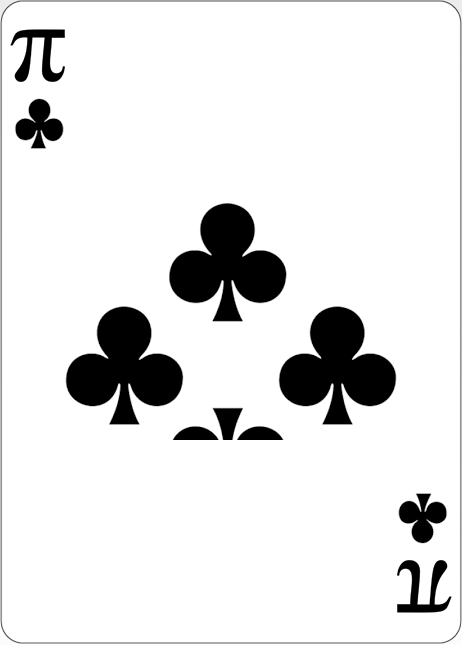
$\pi$ of clubs,
logo del workshop
(Design by Josué Tonelli-Cueto)
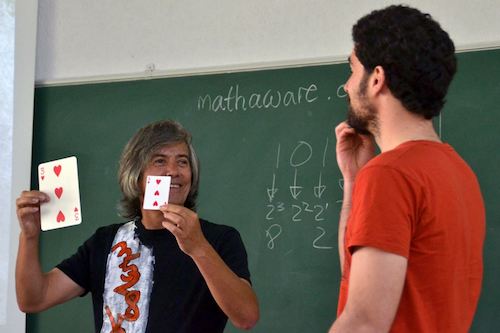
Juan Carlos Ruiz de Arcaute en el taller
(©2014 Izaskun Lekuona)
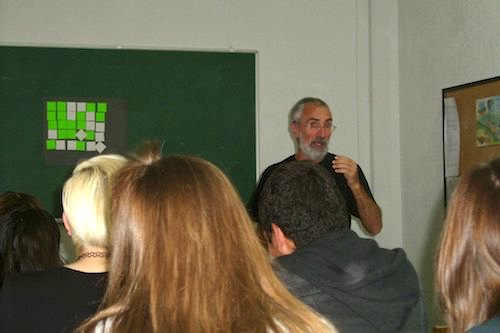
Pedro Alegría en el taller
The magazine obtained two prizes in recognition of its achievements:
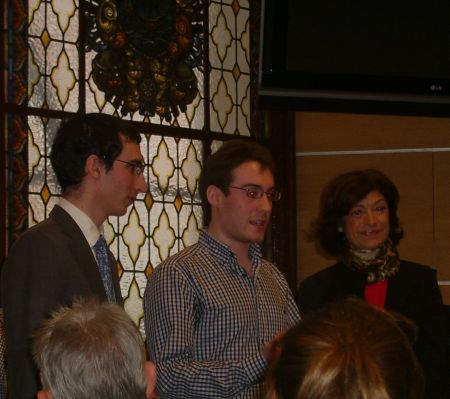
Ricardo, Josué and Esther Domínguez,
then dean of the ZTF-FCT,
in the awards ceremony
of the University of the Basque Country
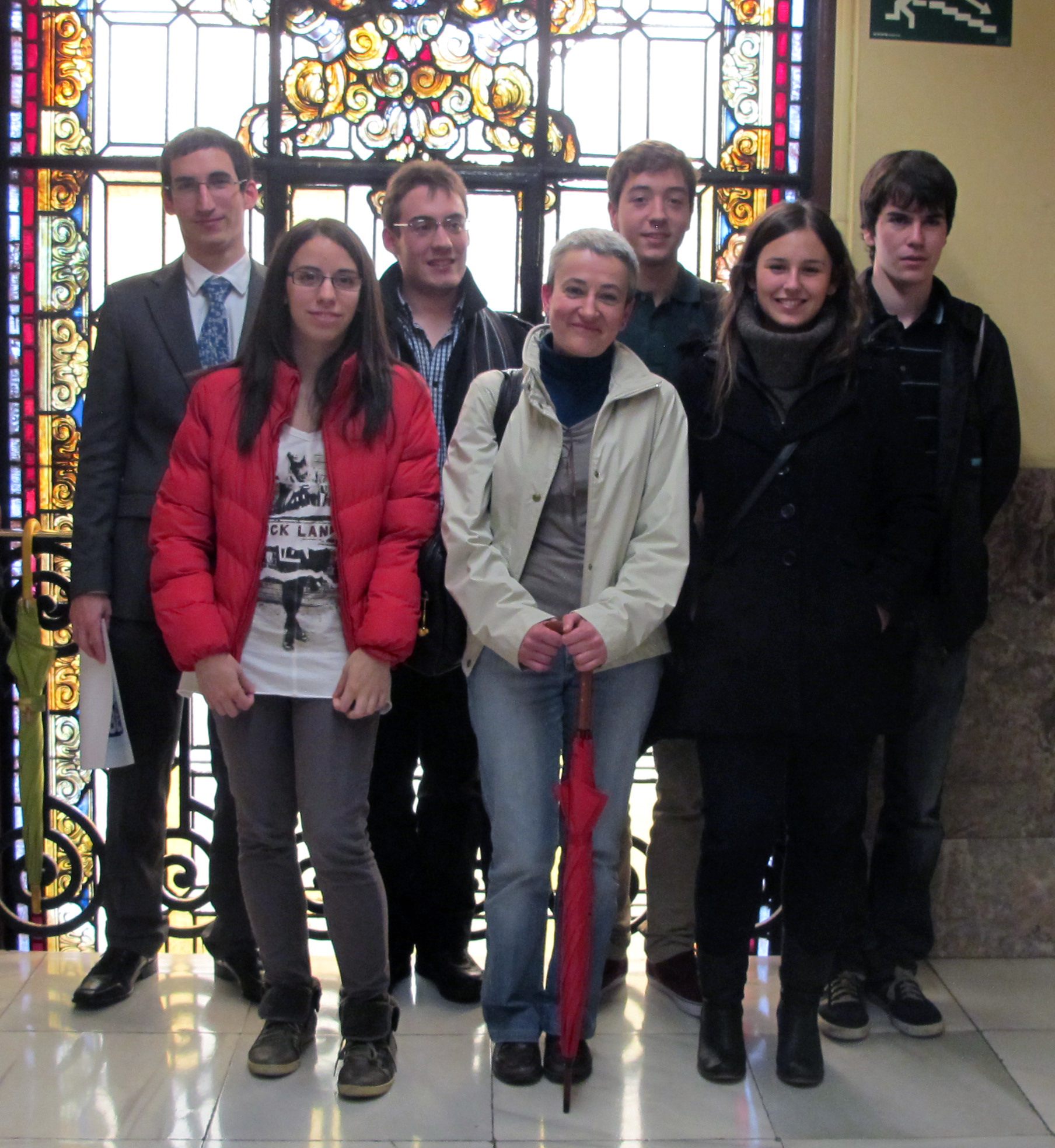
Part of the team of $\pi$kasle
in the awards ceremony
of the University of the Basque Country
Josué in the awards ceremony
of XIV Science in Action
Over the academic year 2011-12, the idea of creating a student-run magazine for the popularization of math at the University of the Basque Country started to take shape in conversations between Professor Marta Macho and Josué Tonelli-Cueto. However, the idea didn’t fully materialize until the summer of 2012, when Josué called Ricardo Grande to discuss this. After that, there was a long email conversation among Marta, Josué and Ricardo in which this idea took hold and became a concrete, feasible project.
Despite how common this might seem; the situation was unusual because Ricardo and Josué did not have a close relationship at the time. Ricardo was not expecting a classmate (with whom he had barely interacted before and who did not have his phone number) to call to call him in the middle of August proposing to create a magazine. Naturally, Marta Macho was to blame for this: it was her who gave Josué Ricardo’s number since she believed their collaboration was necessary for the project to progress.
To bring this project to life, Ricardo and Josué started recruiting other math students from the University of the Basque Country. This recruiting campaign ended in a meeting involving all interested parties. Apart from Ricardo, Josué and Marta, the following people took part in this meeting: Maitane Amor, Amaia Gil, Irune Gurrutxaga, Aitziber Ibañez, Irene Llana e Ixiar Leunda. This is the original team of the magazine that published the first issue of $\pi$kasle.
In this meeting, a name for the magazine was chosen by popular vote. After different proposals, the name “$\pi kasle$” was chosen, which combines the number “$\pi$” with the Basque word “ikasle” (student). This name, proposed by Maitane, won by a landslide.
After a month of hard work and coordination, the first issue of $\pi kasle$ was ready. It was published digitally on a newly created website. Moreover, Txomin Zukalaregi’s agreed to collaborate with the magazine by allowing the publication of his problem-solving contest at the end of every issue.
This first issue had great reception among students and the general public, and was featured in many blogs on the popularization of math. After this first issue, Pikasle became a real magazine. However, except for the design of the magazine and Aitziber and Irune’s “A walk through history”, the project and people participating in it had not stabilized yet.
On the one hand, two new people joined the team. One of them was Victor Manero, a PhD student at the time. He proposed to create the section: “After graduation, what?” to exponse undergraduate students to possible career paths. Later, Victor Manero would join the Advisory Board and would help with the edition of future issues.
The other addition to the team was Julio García. In this case, he approached Pikasle because of Txomin Zukalaregi’s bad use of the Basque language. Despite this initial confrontation, Julio joined the Advisory Board in order to make sure that the use of the Basque language was impeccable. Moreover, Julio truly helped increase the number of articles in Basque within the magazine, thanks to his recruiting the collaboration of students taking his subject “Euskara Teknikoa I” (Technical Basque I).
On the other hand, some people would leave the team as time passed. Among those people, we have Amaia Gil and Ixiar Leunda, who left after the second issue, and Alex Olleta, who left at the end of the first year after having helped Maitane maintain the website. Despite this putting some pressure on the team, given the reduced number of people, the magazine became stronger after publishing the second, third and fourth issues during the first year.
After the first year, PIkasle became established and was ready to take more people in: Jon Asier Barcena, Alvaro Pardo, Imanol Perez, Manuel Santos, Anne Elorza and Anotnio Gallastegui.
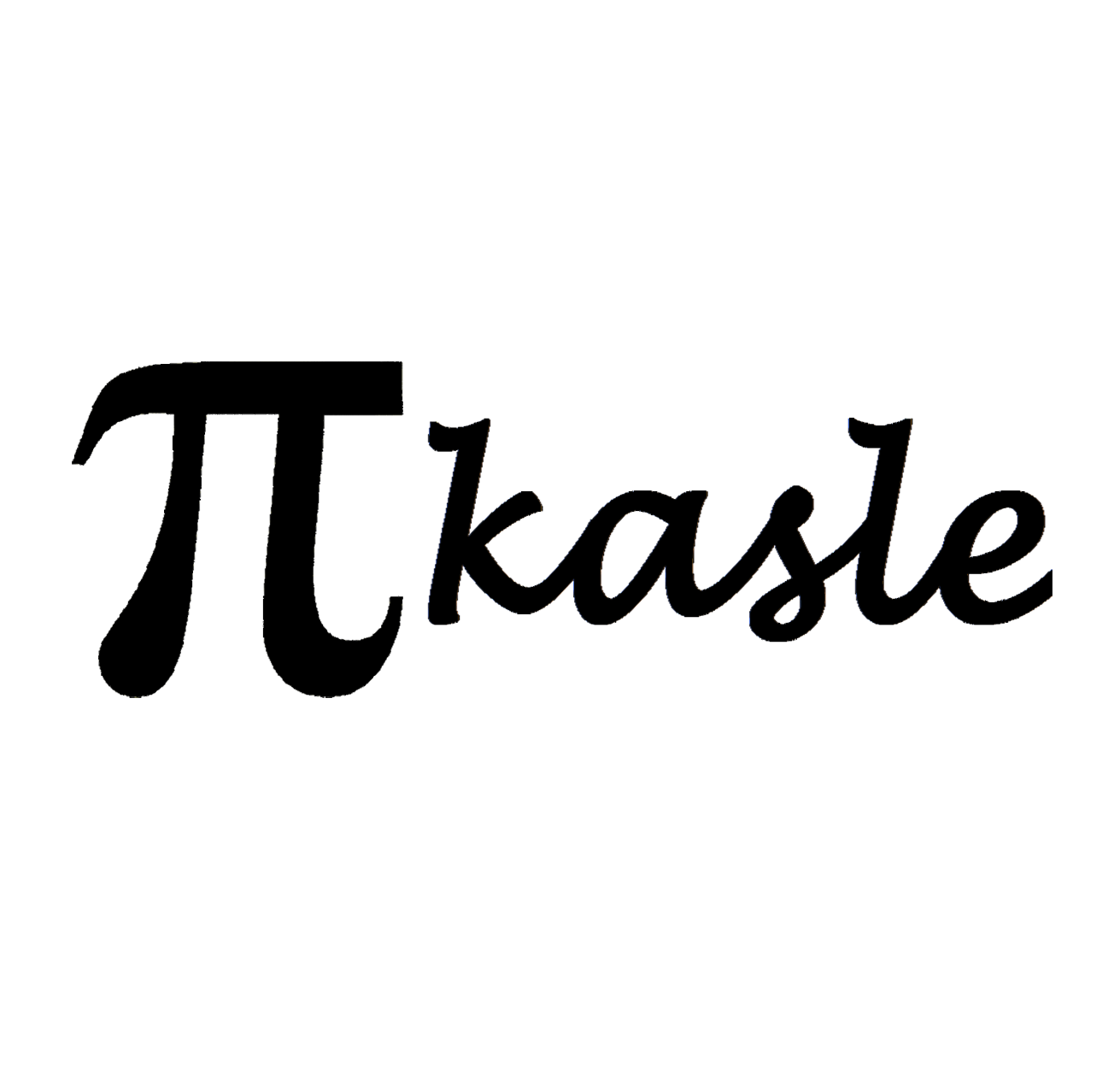
Logo of $\pi kasle$
(Design by Maitane Amor)
This logo was proposed by Maitane Amor, as well as the name. This was the most popular choice when voting on the name of the magazine.
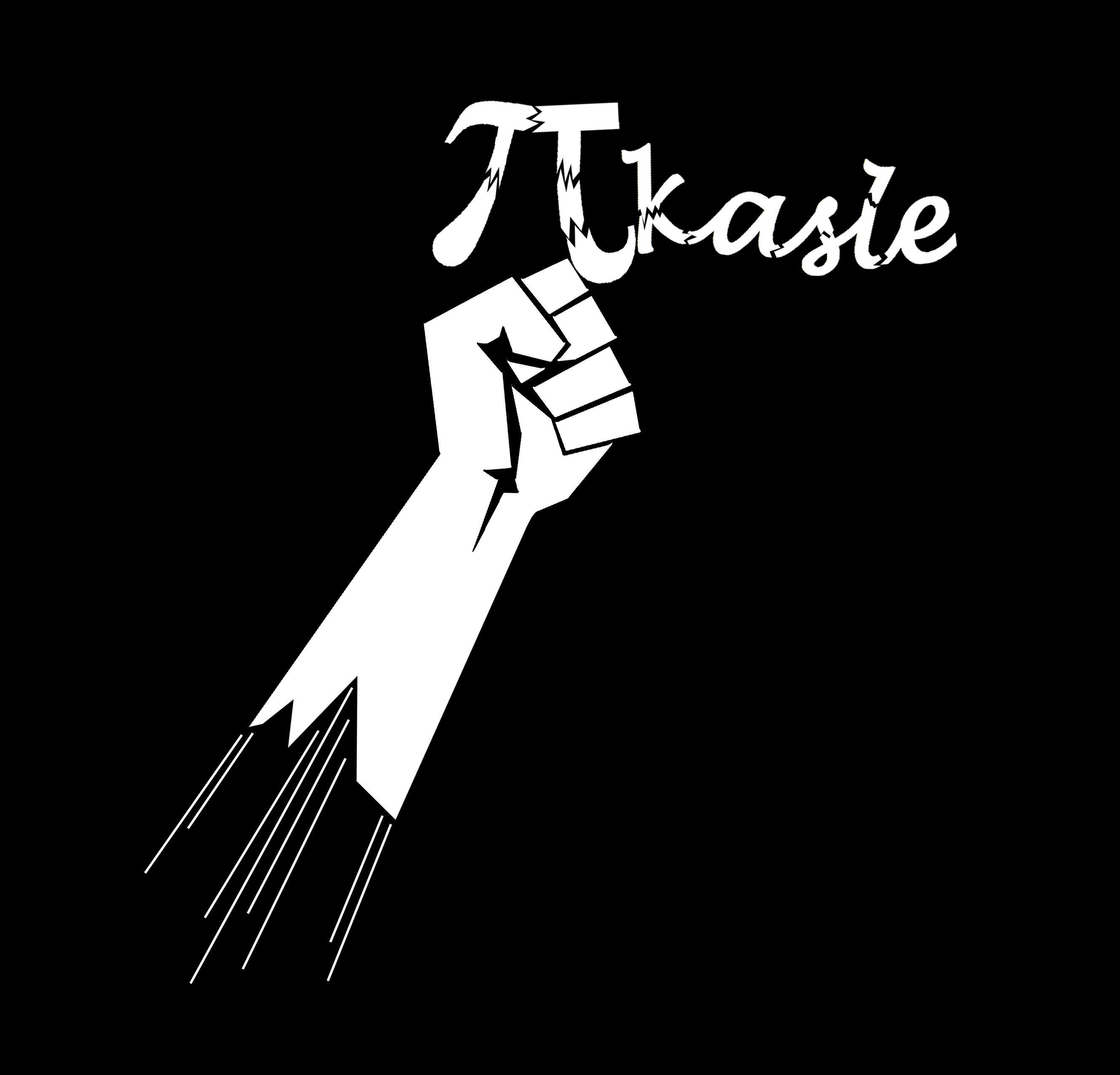
Special design of $\pi kasle$
for the shirt of Julio García
Julio García, member of the Advisory Board of $\pi kasle$, oversaw the use of Basque from the moment he joined the team, after the second issue. His attention to detail made him deserve of the nickname “puño de hierro” (iron fist), which is what the picture above refers to.

Paul Erdös à la Warhol
(Design by Josué Tonelli-Cueto)
This image was the cover of the seventh issue (second printed issue) of $\pi kasle$. This pop-art-styled picture of Hungarian mathematician Paul Erdös al estilo del pop-art was one of the most popular images among readers of the magazine.
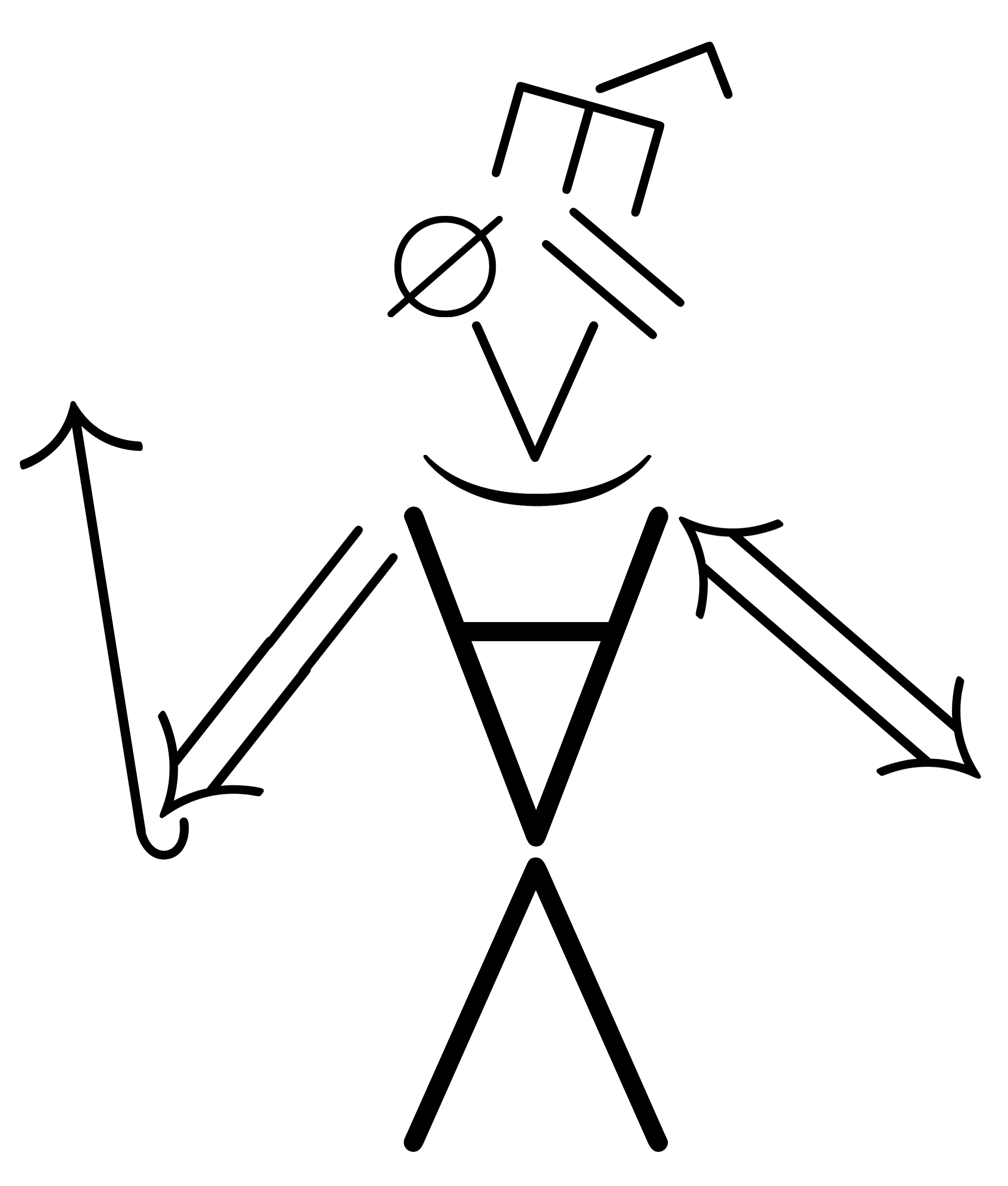
The Categoricist
(Design by Josué Tonelli-Cueto)
This image was the cover of the ninth issue (third printed issue). It represents the panoramic view of mathematics. That is, it represents the mathematician who tries to rise enough to obtain a general and unified view that makes the problems being faced trivial.
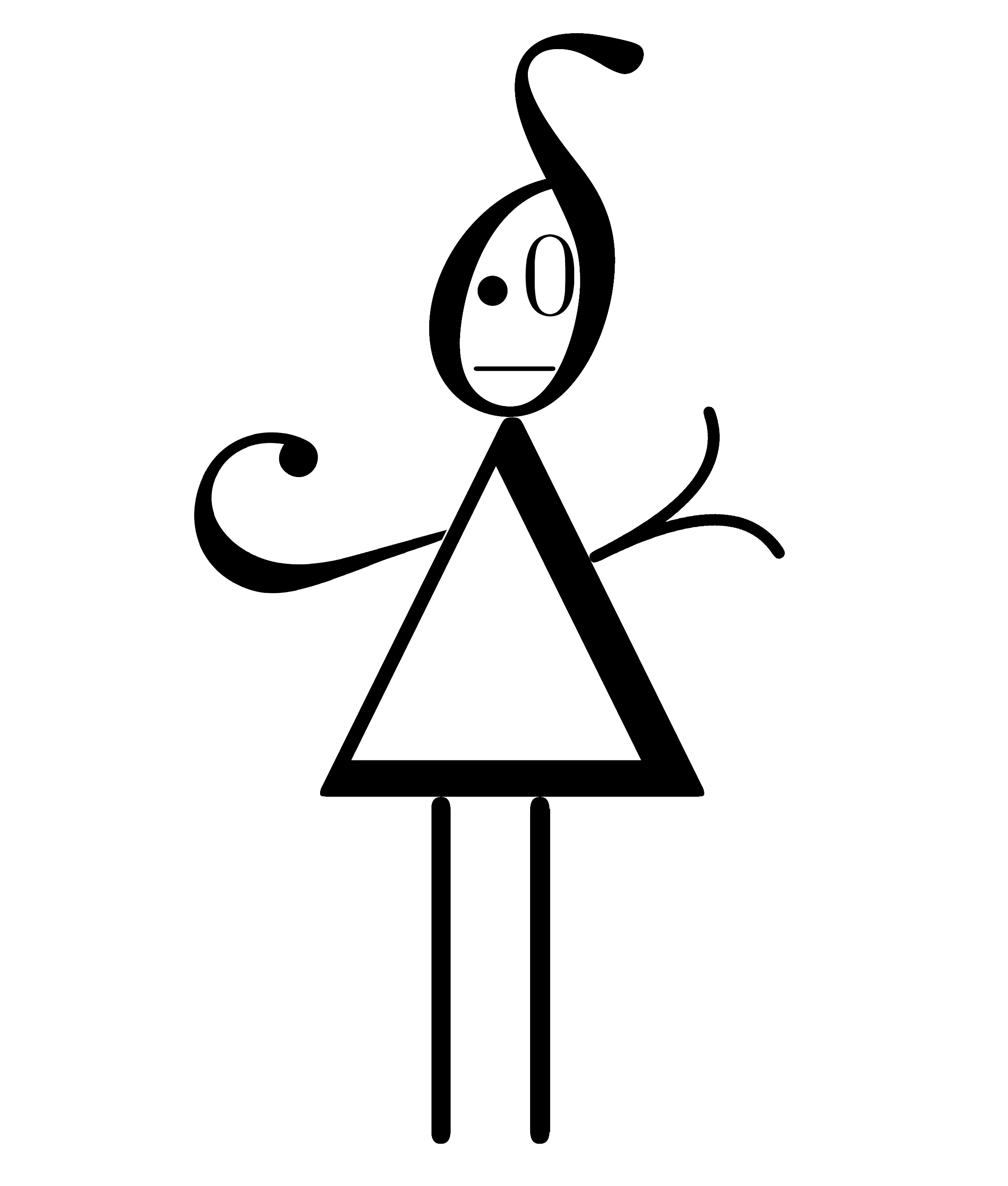
Doctor Delta
(Design by Josué Tonelli-Cueto)
This picture was the back cover of the third printed number of $\pi kasle$. It represents the concrete viewpoint of mathematics. In other words, it represents the mathematician who works by digging into details to find the lode with which to solve the problem.